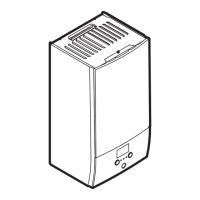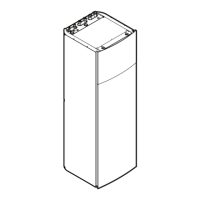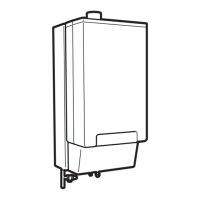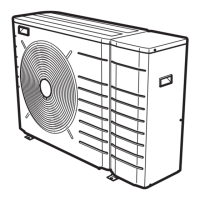5 | Application guidelines
Installer reference guide
38
ERGA04~08DAV3(A) + EHBH/X04+08DA*V7
Daikin Altherma 3 R W
4P618958-1 – 2020.03
▪ 1 bath
▪ 3 sink volumes
Then the DHW consumption = (3×100l)+(1×150l)+(3×10l)=480l
Determining the volume and desired temperature for the DHW tank
Formula Example
V
1
=V
2
+V
2
×(T
2
−40)/(40−T
1
) If:
▪ V
2
=180l
▪ T
2
=54°C
▪ T
1
=15°C
Then V
1
=280l
V
2
=V
1
×(40−T
1
)/(T
2
−T
1
) If:
▪ V
1
=480l
▪ T
2
=54°C
▪ T
1
=15°C
Then V
2
=307l
V
1
DHW consumption (equivalent hot water volume at 40°C)
V
2
Required DHW tank volume if only heated once
T
2
DHW tank temperature
T
1
Cold water temperature
Possible DHW tank volumes
Type Possible volumes
Standalone DHW tank ▪ 150l
▪ 180l
▪ 200l
▪ 250l
▪ 300 l (polypropylene tank is
compatible with solar kit)
▪ 500l (compatible with solar kit)
Energy saving tips
▪ If the DHW consumption differs from day to day, you can program a weekly
schedule with different desired DHW tank temperatures for each day.
▪ The lower the desired DHW tank temperature, the more cost effective. By
selecting a larger DHW tank, you can lower the desired DHW tank temperature.
▪ The heatpump itself can produce domestic hot water of maximum 55°C (50°C if
outdoor temperature is low). The electrical resistance integrated in the
heatpump can increase this temperature. However, this consumes more energy.
We recommend to set the desired DHW tank temperature below 55°C to avoid
using the electrical resistance.

